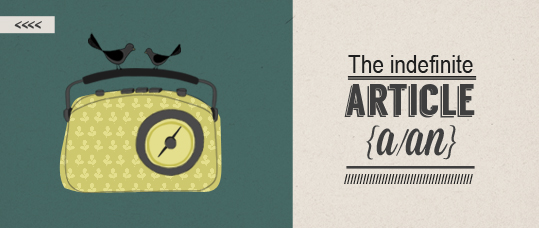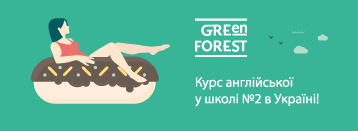The indefinite article a/an
For better or for worse, English is blessed with articles. We have to agree with this saying. On the one hand, it seems for us non-native speakers that it is a big challenge to use English articles, but on the other hand most article usage has a logical explanation. If you can accept and understand this, a lot of mistakes can be avoided and you will enjoy using articles.
So let's not wait any further and start discussing article usage.
In this podcast you will hear common rules about using the indefinite article a and an. For more information about the articles listen to our podcasts "The definite article" and "Zero article".
First of all, what you need to know about the indefinite article is that it is used only with singular countable nouns. Secondly, a is used in front of any word that begins with a consonant sound, while an is placed in front of any word that begins with a vowel sound.
A day, a university, a towel, a laptop.
An Englishman, an umbrella, an SOS, an hour.
Note that spelling is not an indicator of when to use a or an.
There is a number of rules to use the indefinite article. The indefinite article a/an is used:
- when we mean one of many things or people, and it does not matter which one
Can you give me a pen, please?
It isn't important for us which pen the person will give us.
I want to buy a dress.
We mean any dress.
- in front of an unspecified thing we use the meaning one
I bought a bag yesterday.
We mean I bought one bag not two or three.
I want to have a dog.
I want to have one dog not two.
- with professions
I am a teacher and he is a web designer.
- with beliefs
Rob is a Christian and his wife is a Buddhist.
- before singular countable nouns that are mentioned for the first time. When we mention them the second and next times, we put the definite article the.
I've got an iron and an iron board. The iron is light but the board is really heavy.
We live in an apartment in an old building. I like the apartment because it's big, but the building is very old.
- with the words to be and have got to show state or possession of one thing
Mary has got a car. It is an Audi.
I have a sister. She is a beautiful girl.
- instead of per to show frequency
Karl goes jogging four times per week/a week.
- to show distance in relation to time
I drive a car in a city at 60 kilometers an hour.
- to show price in relation to weight
These bananas cost one dollar a kilo.
- before singular nouns in exclamations beginning with “what” and “such”
What a pity! What a shame! Such a good man! Such a nice day!
Please, pay attention! We don't use the indefinite article with uncountable nouns or plural countable nouns.
- We use some instead of a/an.
We need some water and milk to buy.
I've got some tomatoes in the fridge.
Also we don't use a/an before an adjective if it is not followed by a noun.
This ring is expensive.
This is an expensive ring.
There is a noun after adjective so we can use the indefinite article.
I hope the information was useful for you.
Thanks for listening.
















